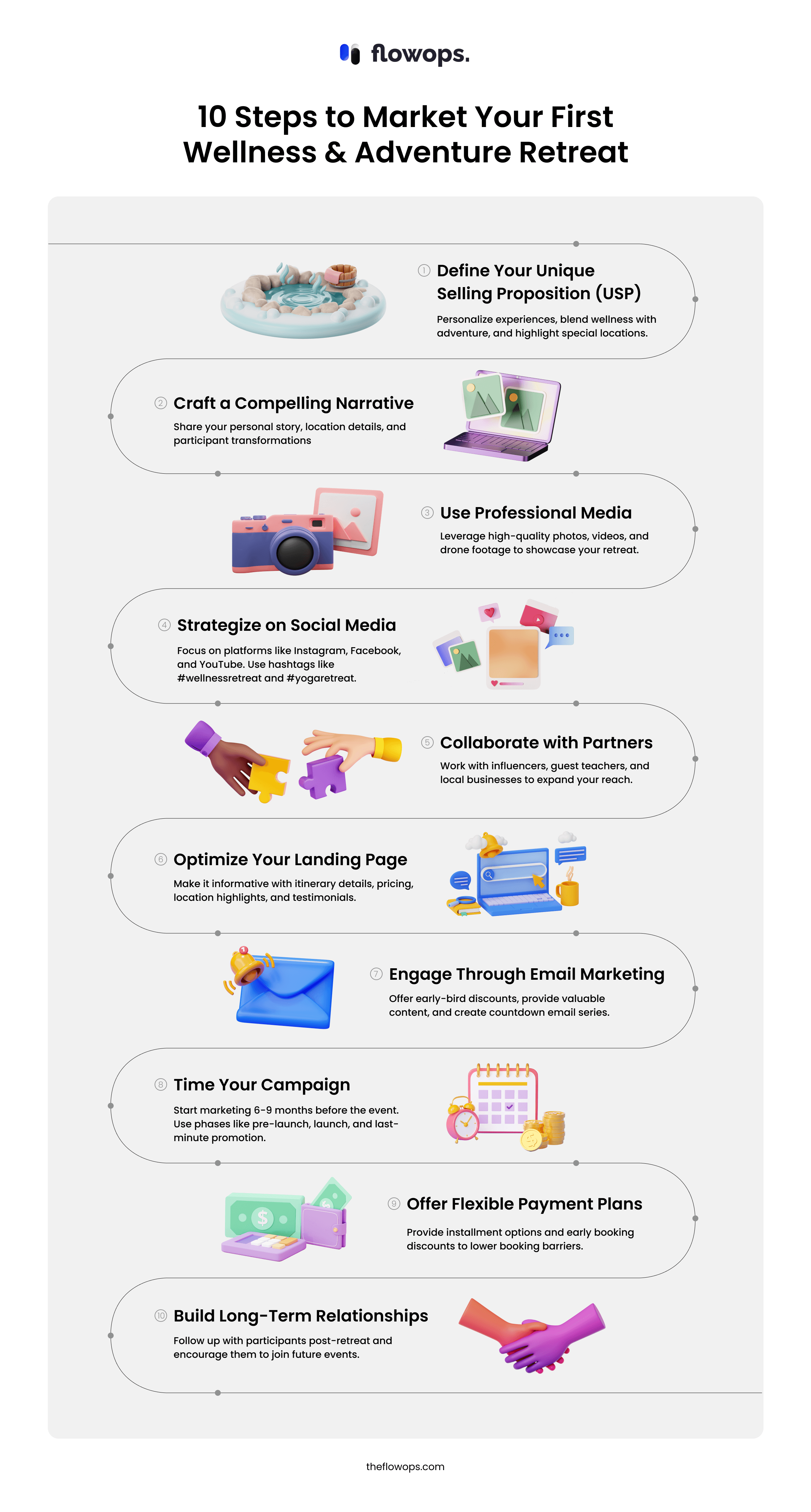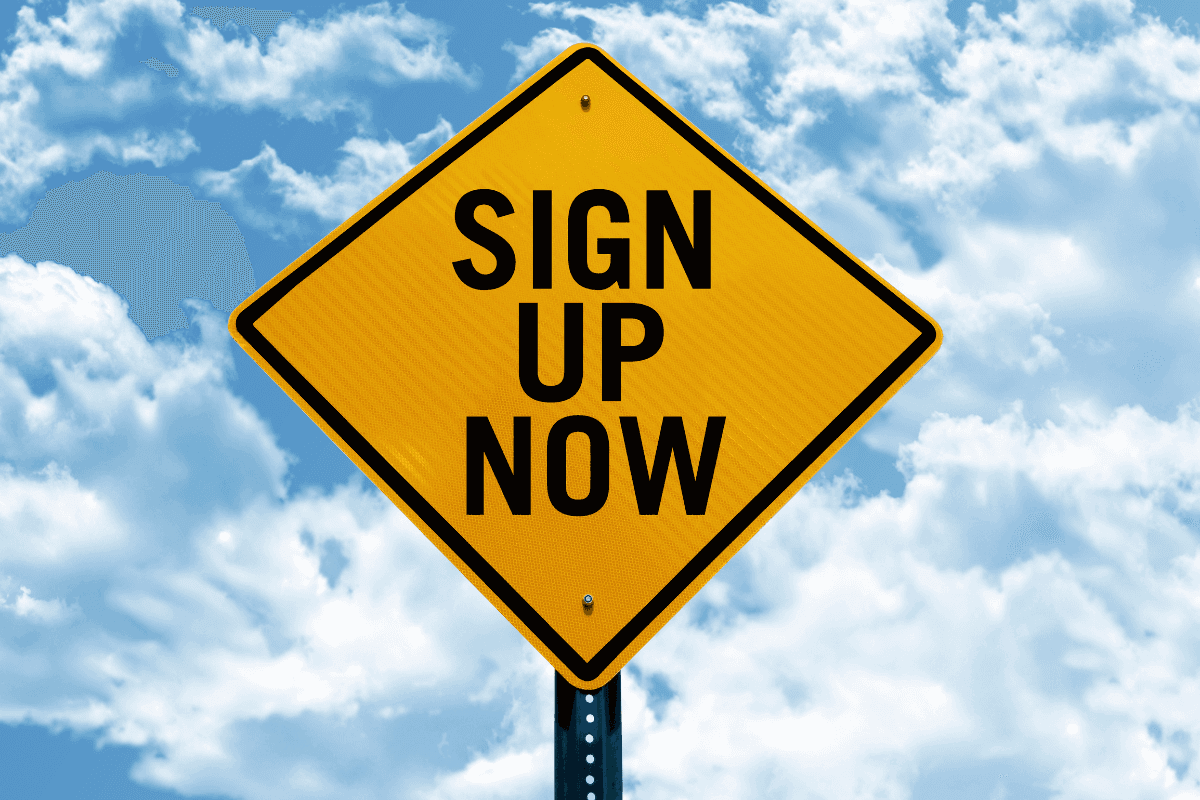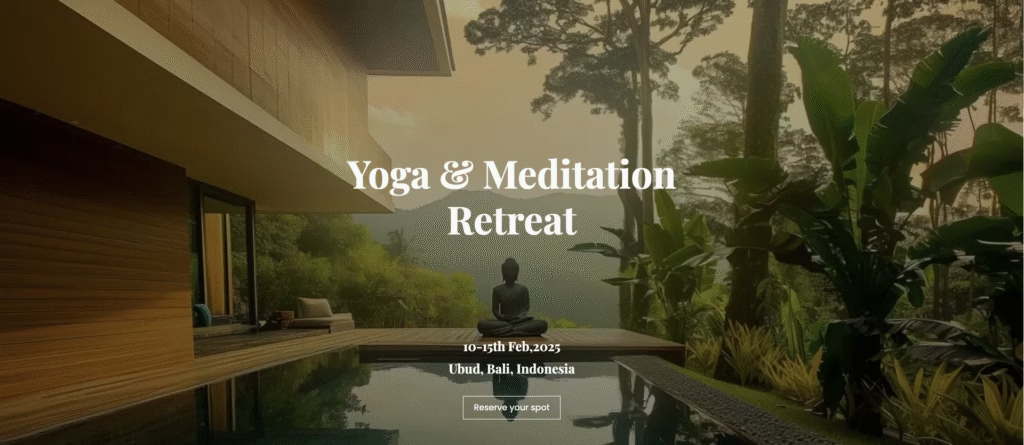Launching your first wellness and adventure retreat is a thrilling step in your yoga teaching journey. It allows you to offer participants a holistic experience that blends yoga, mindfulness, and adventure while providing you with the opportunity to create deeper connections with your students.
But how do you ensure that your retreat attracts the right people and becomes a resounding success?
Nowadays, as more people seek out unique experiences that blend relaxation with outdoor exploration, wellness and adventure retreats are becoming increasingly popular. These retreats cater to individuals looking for personal growth, mindfulness, and the thrill of activities like hiking, kayaking, or yoga in nature.
That said, marketing a wellness and adventure retreat requires more than just listing it on your website or sending out a few social media posts.
It involves a comprehensive strategy that taps into your unique offerings, engages your audience, and ultimately drives bookings.
Whether it’s a yoga retreat in the mountains or a wellness getaway by the sea with surfing or nature treks, this guide will help you successfully market your first wellness and adventure retreat. From targeting the right audience to highlighting the unique features of your retreat, we’ll cover everything you need to turn your vision into a sold-out event.

1. Identify and Define Your Unique Selling Proposition (USP)
The first and most critical step is to define why your wellness and adventure retreat stands out. There are thousands of yoga retreats on the market, so honing in on your retreat’s unique characteristics is crucial for differentiating yourself.
Questions to Ask:
- What are the main components of your retreat (yoga, meditation, adventure activities)?
- Why should people choose your retreat over others?
- What kind of transformation or experience will participants walk away with? Is it a wellness + adventure type of retreat?
- Is the location itself a big selling point (a secluded mountain retreat, beachfront paradise, etc.)?
Examples of Unique Selling Propositions:
Personalized, small-group experiences
Offer a highly personalized retreat with limited spots, ensuring one-on-one attention and tailored experiences. It can even be an intimate luxury wellness retreat.
Fusion of wellness and adventure
Integrate challenging activities like hiking, surfing, or rock climbing, combined with restorative yoga and meditation to create a dynamic, balanced retreat experience.
Location-focused wellness
Promote retreats in unique, off-the-beaten-path locations that combine natural beauty with spiritual significance, such as sacred valleys or coastal hideaways.
Your USP is your retreat’s identity—it will shape all your messaging and communication. Be clear and consistent when conveying it across all marketing channels.
2. Craft a Compelling Retreat Narrative

Once you’ve nailed down your USP, it’s time to tell your retreat’s story. Today’s consumers aren’t just looking for a retreat; they want an experience with meaning. Use storytelling techniques to create emotional connections with your potential participants.
Key Elements of a Strong Story:
Your journey
Explain why you created this retreat and how it aligns with your personal growth as a yoga teacher. Share your experiences and expertise that make this retreat possible.
The location’s appeal
Highlight the uniqueness of your chosen destination. Whether it’s an eco-resort on a tropical island or a yoga center in the mountains, share the story behind the location. Why is it perfect for wellness and adventure?
The transformation
Paint a picture of the transformative experience that participants will have. Describe the mix of activities—yoga, mindfulness practices, adventurous hikes, or ocean swims—that will help them feel rejuvenated and inspired.
Tip:
Share real-life anecdotes or testimonials from previous events or yoga classes. Personal, heartfelt stories resonate deeply and humanize the experience for potential retreat-goers.
3. Create Visual Impact with Professional Media

People are drawn to experiences they can visualize.
When marketing a wellness and adventure retreat, visual content is essential. This is especially true when marketing yoga retreats, where the connection to nature, serenity, and adventure can be powerfully conveyed through images and videos.
What to Include:
High-quality images
Capture the beauty of your retreat location. Think breathtaking landscapes, serene yoga spaces, cozy accommodations, and exciting adventure activities. These visuals allow potential participants to picture themselves in the space.
Videos
Short video clips or reels are incredibly engaging. Share behind-the-scenes footage of the retreat planning process, testimonials from past students, or quick glimpses of activities like yoga on the beach or a morning hike through the forest.
Drone footage
If your retreat is located in a scenic or remote area, drone footage can provide a bird’s-eye view of the breathtaking surroundings.
Tip:
Consider hiring a professional photographer or videographer to capture the essence of your retreat space. The initial investment can go a long way in making your marketing materials look polished and compelling.
4. Leverage Social Media with a Strategic Plan
Social media is one of the most powerful tools you have to spread the word about your wellness and adventure retreat. But it’s not just about posting a few photos or event announcements. You need a targeted, consistent social media strategy to build excitement and engagement leading up to the retreat.
Platform-Specific Tips:
This is the go-to platform for visual storytelling. Share posts and stories featuring the retreat’s location, accommodations, activities, and yoga practices. Use Instagram’s “Live” and “Reels” features to answer follower questions, share real-time updates, and create dynamic content.
Create a Facebook event or group dedicated to your retreat. Use this as a space to post updates, share sneak peeks of the retreat, and build a community among participants. Encourage interaction within the group to generate excitement and rapport among potential attendees.
YouTube
If you have the resources, consider creating a YouTube video trailer for your retreat. This could feature interviews with you as the retreat leader, footage of the location, and testimonials from past yoga students.
Hashtags & Engagement:
Use hashtags such as #wellnessretreat, #adventureretreat, #yogaretreat, and #traveltoheal to help your posts get discovered by the right audience.
Engage with your followers by responding to comments, answering questions, and sharing user-generated content.
Tip:
Consider running targeted ads on Facebook and Instagram, especially during key booking windows. These ads can reach a larger audience and are a cost-effective way to increase visibility for your retreat.
5. Build Partnerships and Collaborations

Partnering with other wellness, travel, or adventure brands can significantly expand your reach. Look for influencers, travel bloggers, wellness coaches, or brands that align with your retreat’s values and audience.
Types of Collaborations:
Influencers
Yoga instructors or adventure influencers with a loyal following can promote your retreat through authentic endorsements. They may attend the retreat themselves or simply promote it in exchange for a partnership.
Guest Teachers
Invite well-known guest teachers or adventure guides to co-host the retreat. Their networks and credibility can help you market the retreat to their audience.
Local businesses
Collaborate with local wellness centers, cafes, or adventure companies near your retreat location. These businesses can promote your retreat in exchange for cross-promotion or collaborative events.
Tip:
Offer your collaborators and influencers special discount codes or affiliate commissions for every participant they refer. This incentivizes them to share your retreat widely and can help track the success of different partnerships.
6. Build a User-Friendly and Optimized Retreat Landing Page
Your retreat landing page is the central hub for all the information participants need. It should not only provide comprehensive details but also be designed to drive conversions.
Key Elements of a High-Converting Landing Page:
Itinerary and schedule
Clearly outline the daily schedule, including yoga sessions, meals, adventure activities, and free time. Include photos and descriptions to make it engaging.
Location details
Highlight the retreat destination, including how to get there, nearby attractions, and what makes the location special.
Pricing and inclusions
Be transparent about costs and what’s included (meals, accommodation, activities). Consider offering tiered pricing options (shared room vs. private room).
Social proof
If you’ve run previous events, include testimonials, reviews, or case studies of participants who’ve had transformative experiences with you.
Tip:
Ensure your page is optimized for SEO. Use keywords like “wellness retreat,” “adventure retreat,” and “yoga retreat” in your page title, meta description, and content. Consider writing blog posts about wellness and travel topics to improve your site’s search ranking and drive organic traffic.
Your brand’s story matters. Learn how to position yourself in the wellness market with our free mini-course.

7. Engage and Build Anticipation through Email Marketing
Once you’ve captured people’s interest on social media or your website, email marketing is one of the most effective ways to nurture those leads. Build an email list of potential participants and use tools like Mailchimp or Constant Contact to send personalized, targeted emails that keep them engaged in the weeks and months leading up to your retreat.
These platforms allow you to segment your audience, automate campaigns, and track engagement metrics, ensuring your communications are effective and relevant.

Email Marketing Tips:
Early bird offers
Send exclusive offers to your email list for early-bird pricing, or provide added bonuses like a free one-on-one session with you during the retreat.
Content emails
Share valuable content related to your retreat’s theme. For example, send an email about the benefits of combining yoga and adventure, or tips on preparing for a wellness retreat.
Countdown series
As the retreat date approaches, send a countdown email series with behind-the-scenes updates, last-minute offers, and reminders about booking deadlines.
Tip:
Use automated email sequences to ensure consistent communication. This is especially helpful for cart abandonment follow-ups, where someone might have visited your retreat page but didn’t complete their booking.
Make sure to explore the automated email send option on your TheFlowOps account!
8. Run a Well-Timed Marketing Campaign
Timing is crucial when marketing a retreat. People often need time to plan, save, and make arrangements for attending a retreat, especially if it involves international travel. Start promoting your retreat at least 6-9 months in advance and build momentum leading up to the event.
Key Campaign Phases:
Pre-launch
Build awareness by teasing the retreat on social media and through email campaigns. Share sneak peeks of the location, itinerary, and your personal story behind the retreat.
Launch
Announce your retreat with a bang. Use social media ads, influencer partnerships, and email blasts to reach a wide audience. Include early-bird offers to incentivize immediate bookings.
Ongoing promotion
Continue sharing content, testimonials, and stories from past retreats. Keep your audience engaged with updates, Q&A sessions, and Instagram live streams.
Last-minute push
About 1-2 months before the retreat, create urgency by offering last-minute deals or limited-time discounts.
Seamlessly market your classes with TheFlowOps or grab our free Retreat Marketing Plan Template.

9. Consider Offering Flexible Payment Plans
One reason potential participants hesitate to book a wellness and adventure retreat is the upfront cost. Offering flexible payment options can help overcome this barrier.
Ideas for Payment Plans:
Installments
Break down the total cost into monthly or bi-weekly payments leading up to the retreat.
Deposit system
Allow participants to reserve their spot with a non-refundable deposit, with the remaining balance due closer to the retreat date.

Early booking discounts
Encourage early sign-ups by offering a discount for participants who pay in full early.
Tip:
Ensure the payment process on your website is seamless by integrating tools like The FlowOps, which streamline transactions and provide flexible payment options. With The FlowOps, you can offer multiple payment methods and clearly outline refund or cancellation terms, giving your clients confidence and peace of mind while booking.
10. Follow-Up and Create Long-Term Relationships
Once your retreat ends, your marketing efforts should continue. Staying in touch with participants post-retreat is crucial for building long-term relationships and ensuring they become loyal clients for future events.
Post-Retreat Marketing Tips:
- Send a follow-up email thanking participants and asking for feedback. Include a link to a Google form where they can provide testimonials or suggestions for improvement.
- Share photos and videos from the retreat on social media and tag participants. This will help them relive the experience and share it with their networks, generating organic promotion.
- Offer exclusive deals to past retreat participants for future events or yoga classes. They are more likely to book again if they felt connected to the experience and your teaching style.
Tip:
Consider creating a loyalty program or special retreat alumni group where past participants can stay engaged with you, receive early access to future retreats, and stay connected with others they met during the event.
Don’t Forget Your Digital Home: Create a Website That Works for You
In today’s retreat landscape, your online presence is often the first “hello” potential participants receive from you, and first impressions matter.
A dedicated retreat website isn’t just a nice-to-have; it’s your digital home base where all your marketing efforts converge.
Social media might get people curious, but your website is where curiosity turns into action. It’s where someone can read your full retreat itinerary, browse stunning images of your location, learn more about you as a retreat leader, and, most importantly, book their spot without friction.
A good retreat website can:
- Build credibility — A polished, user-friendly site shows you’re professional and organized.
- Answer questions before they’re asked — With clear pricing, inclusions, travel details, and FAQs, you reduce the back-and-forth that slows down bookings.
- Showcase your brand personality — Whether your retreat is adventurous and high-energy or calm and restorative, your design, images, and copy can reflect that vibe.
- Integrate bookings & payments — This makes it easy for participants to secure their spot immediately rather than letting the excitement fade.
💡 Pro Tip: Don’t start from scratch unless you love web design. TheFlowOps Template Marketplace offers pre-built retreat and wellness templates that are already optimized for conversions, so you can launch faster and look professional from day one.
Template Spotlight: Tropical Bali Real Estate Template by TheFlowOps
This template is a dreamy fit if your retreat is set in a lush, tropical location. With its clean layout, immersive full-screen imagery, and easy-to-navigate booking sections, it immediately transports visitors into “vacation mode.” Swap in your retreat photos, adjust the copy, and you’re ready to impress.
These retreats blend physical activity, mindfulness, and relaxation, offering participants a chance to focus on holistic self-care. They typically include yoga sessions, meditation practices, and spa treatments.
- Execution Tips: Choose a peaceful location conducive to relaxation and ensure you work with certified yoga instructors. Offer a variety of yoga styles to cater to different experience levels. Add wellness workshops (like nutrition or stress management) for extra value.
- What to Avoid: Don’t overload the schedule — leave space for rest and reflection.
- Marketing Strategy: Highlight stress relief, self-care, and overall well-being in your promotions. Use testimonials, before-and-after stories, and stunning imagery of the retreat setting to build credibility.
- Why This Retreat is Unique: Yoga and wellness retreats offer dual benefits: boosting physical health while promoting mental clarity. They create a safe, inspiring space for people to reconnect with themselves.
If you’re new to hosting retreats and want more tips, check out our Retreat Host Category for strategies, resources, and real-world examples from other wellness entrepreneurs.
Conclusion

Successfully marketing your first wellness and adventure retreat is all about creating an authentic, compelling experience that resonates with your target audience.
By defining your retreat’s unique qualities, leveraging storytelling, building a visually appealing online presence, and maintaining strong connections through email and social media, you can attract participants who are excited to embark on a transformative journey with you.
Remember, running a health and wellness retreat is as much about building community as it is about offering yoga and adventure. When people feel connected to your message and to you as a yoga teacher, they are far more likely to book your retreat—and share their experience with others.
With the right marketing strategies, your wellness and adventure retreat can be a life-changing experience for both you and your participants.




